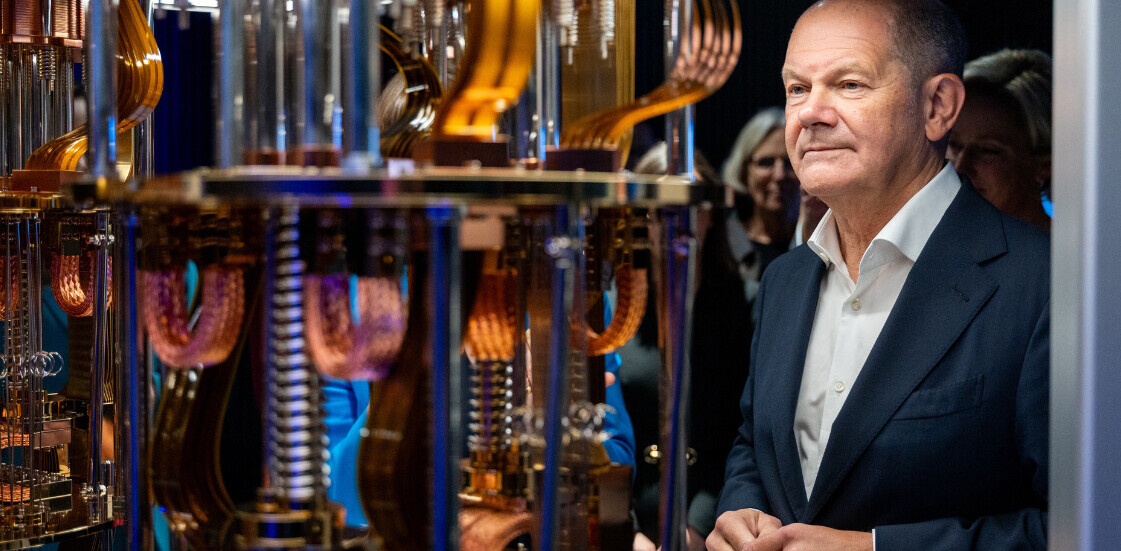
There’s no proof you’re going to die. Don’t take that the wrong way; there’s a lot of evidence. But proof is for math, and death is only certain in retrospect.
That’s why any research that pushes the boundaries of what we can observe, test, and replicate when it comes to the wacky world of quantum mechanics is exciting. Spooky action at a distance could be our ticket to immortality.
An international team of researchers recently published work demonstrating quantum entanglement at an unprecedented macro-scale.
Per a report from Science Alert’s David Nield:
The dimensions involved are still very small from our perspective – these experiments involved two tiny aluminum drums one-fifth the width of a human hair – but in the realm of quantum physics they’re absolutely huge.
Entanglement is a property of quantum mechanics wherein one particle can be made to respond to the stimulation of another particle, where they’re separated by distance.
In other words: if you entangle two particles and tickle one of them, they both laugh.
[Read: Here’s what quantum computing is and why it matters]
What’s interesting here is that the researchers managed to entangle tiny aluminum drums. They observed the entanglement across the drums by measuring vibrations.
In essence, a drummer on one stage played their drum and the sound simultaneously teleported to a drum on the other side of the stage. This is what physicists hope to accomplish with quantum communication networks: unhackable, instant communication via teleportation.

This work goes a long way towards bridging the gap between quantum and classical physics. If we continue to increase the scale at which we can perform observable feats of quantum mechanics, we’ll eventually slip the classical realm entirely.
Once we reach the point where, for example, we can entangle entire planets, it’ll hardly be worth distinguishing between classical and quantum physics.
But before we achieve planet-scale teleportation technology, it’s likely we’ll find other interesting uses for entanglement. The core idea here is that, theoretically, information can be sent between any number of entangled objects across any distance.
This begs the question: can two neural networks become entangled? If we look at the aluminum drums in the aforementioned research, it seems possible. Think about two entangled drum kits with lots of different drums and cymbals, all being played by the same drummer.
If those drum kits are just tiny neural networks meant to output jams, then we can imagine them scaled all the way up to billions and billions of drums.
The human brain is thought to be an organic neural network. Scientists believe it functions much like the kind of neural networks AI developers use to imitate art or create DeepFakes.
Our brains are much more complex, of course. But it stands to reason, if we can imagine entangling a planet or a neural network: why couldn’t we entangle our brains with each other’s or with an artificial neural network?
What if you could just “share” your consciousness across multiple networks? Ultimately, if one of those networks failed, or the computer it ran on stopped functioning, couldn’t you just replace that machine and keep trucking?
Or what if we could use quantum entanglement to mesh our minds with someone else’s brains, like a Vuclan mind meld? Perhaps we could even grow blank brains to replicate our consciousness in through entanglement in case our first brain malfunctions.
This speculation is, unfortunately, not grounded in reality. The fact of the matter is that we haven’t quite unified classical and quantum physics. Scientists believe a feature of quantum mechanics called decoherence would present a massive roadblock towards maintaining a consciousness in the quantum realm.
This was noted by Shuld et al., back in 2014 in a pre-print paper discussing quantum neural networks (QNNs):
Although close to discussions about the potential ‘quantumness of the brain’, QNNs do not intend to explain our brain functions in terms of quantum mechanics.
Neurons are macroscopic objects with dynamics on the timescale of microseconds, and a quron’s theoretically introduced two quantum states refer to a process involving millions of ions in a confined space, leading to estimated decoherence times in the order of 10−13 sec and less, thus making quantum effects unlikely to play a role in neural information processing.
This isn’t to say it isn’t possible, but it’ll take more than just scaling quantum experiments to figure out how to get our minds into spare brains or onto chips.
Get the TNW newsletter
Get the most important tech news in your inbox each week.




